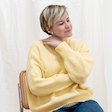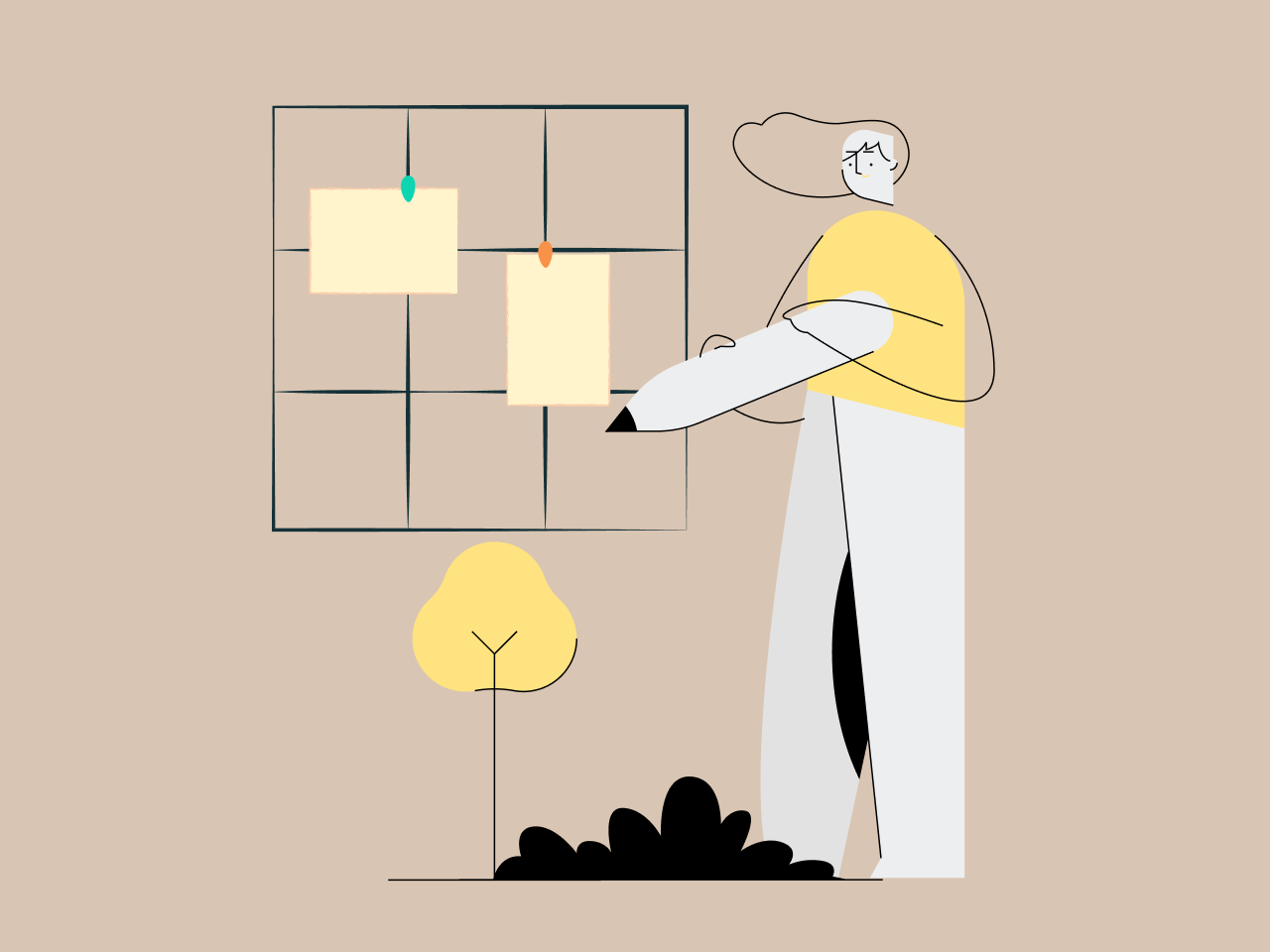Contents
Fashion mood boards are powerful tools that serve as the cornerstone of creative design processes, offering a visual roadmap for bringing ideas to life.
In this blog post, we delve into the art of crafting a fashion mood board, exploring essential tips, techniques, and inspiration to help you unleash your creativity and refine your vision.
What is a fashion mood board?
A fashion mood board is a visual tool used in various creative fields, including fashion, interior design, graphic design, and advertising, to convey a particular aesthetic, concept, or mood. It typically consists of a collage of images, text, textures, colors, and other visual elements that collectively evoke a desired atmosphere or theme.
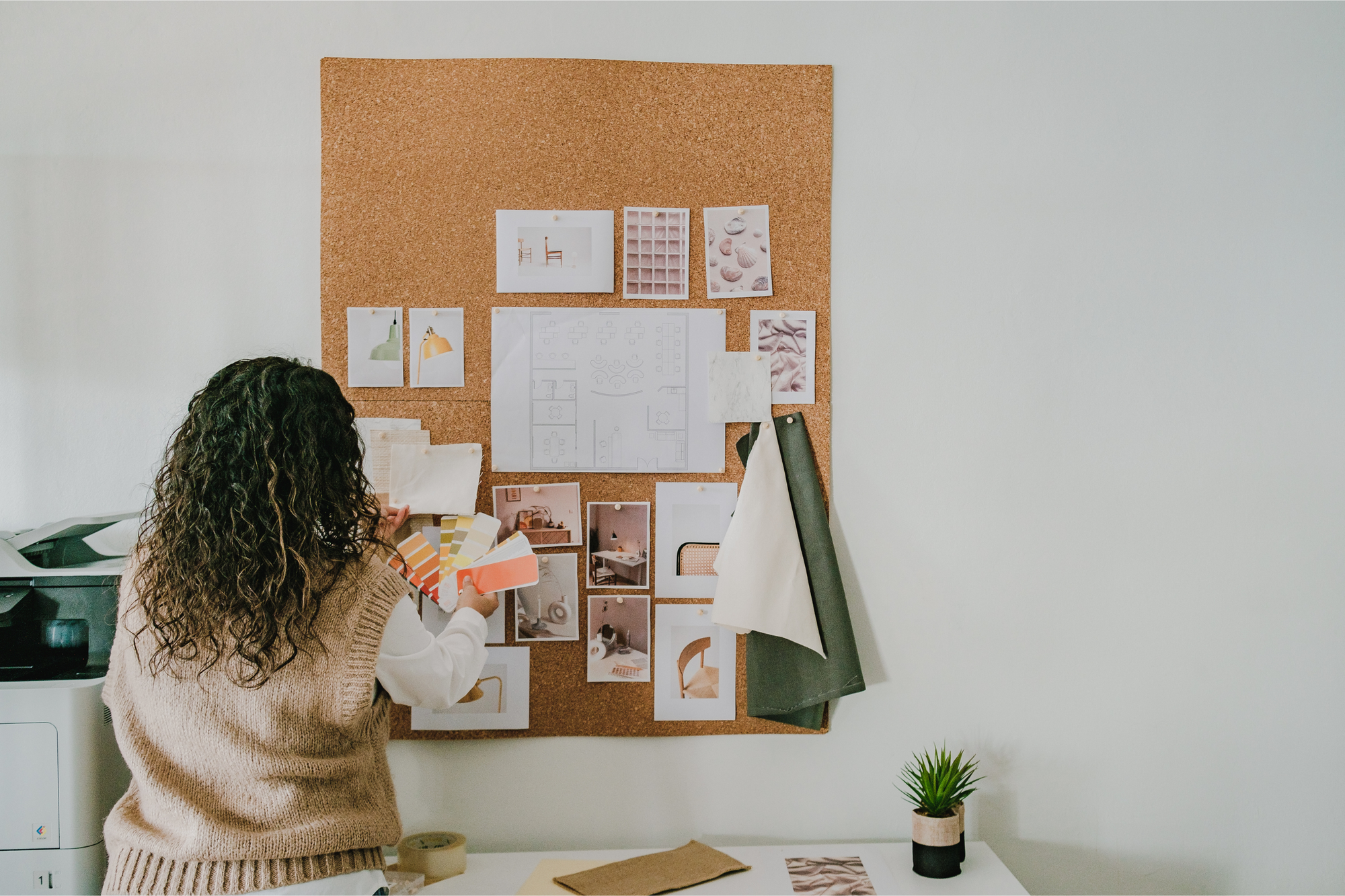
What is the purpose of a fashion mood board?
The purpose of a mood board is to capture and communicate the overall look and feel of a project or idea in a concise and inspiring manner. It serves as a visual reference point that helps designers, artists, and clients align their vision and establish a cohesive direction for their work.
The fashion mood board serves as a guiding light to discover your inspiration and refine your ideas. While you may believe you have a solid concept in mind, the act of assembling it onto a mood board provides the clarity necessary before delving into the design process and sourcing materials.
Sign up for our FREE membership and get access to
All premium articles
E-courses and ebooks
Ad-free experience
Tech pack templates
How to create a fashion mood board
The initial stage of creating a fashion mood board involves conducting thorough research. Explore galleries, museums, fabric fairs, and shops for inspiration. Immerse yourself in music, movies, and street fashion trends. Pay attention to architectural details, design objects, and industrial design. Visit boutiques and seek inspiration from old photos, accessories, trims, and any visual references that pique your interest. Remain open to diverse sources of inspiration and be receptive to the ideas they evoke.
Mood boards can be created using physical materials such as magazine clippings, fabric swatches, and printed images, or digitally using software programs and online platforms. They are often used at the early stages of the creative process to brainstorm ideas, explore different possibilities, and set the tone for a project.
What to include in the fashion mood board
When creating a fashion mood board, it's essential to include a diverse range of elements that collectively convey the desired aesthetic, concept, or theme.
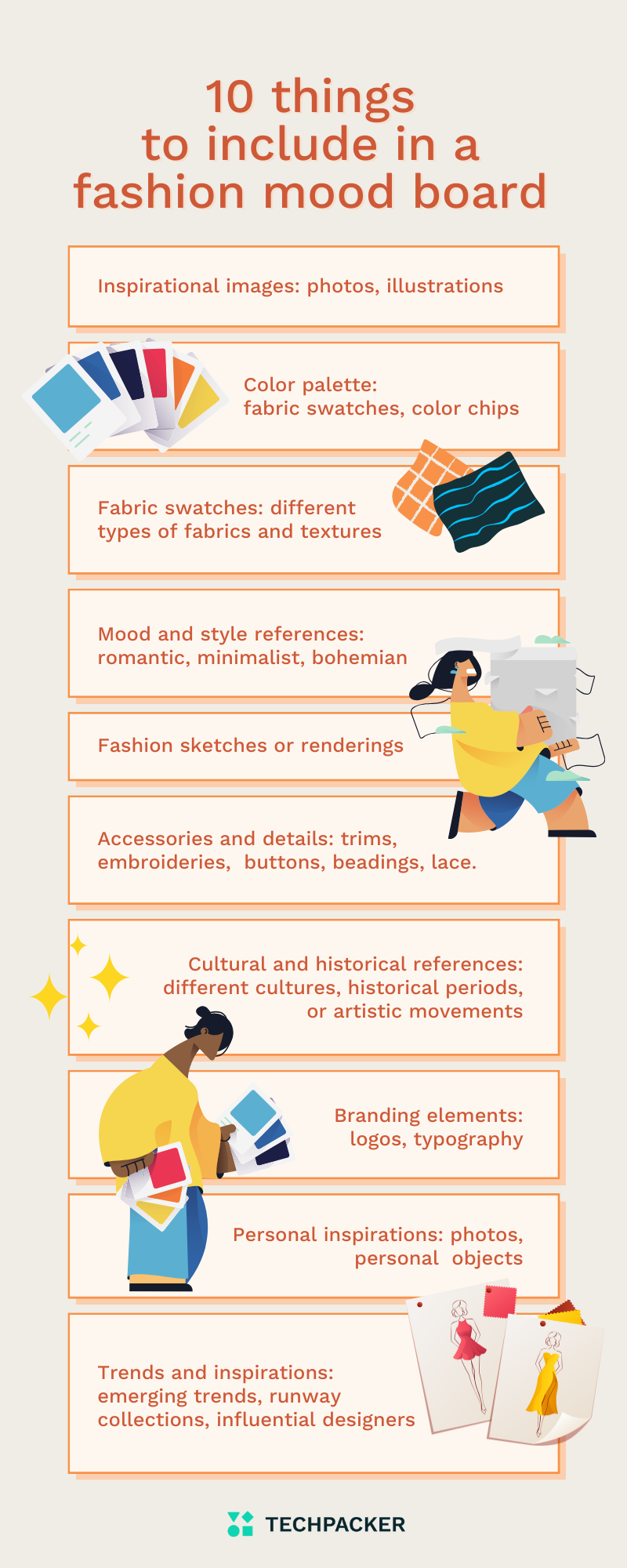
Here are some key components to consider adding to a fashion mood board:
- Inspirational Images: Include photographs, illustrations, and artwork that inspire and evoke the desired mood or style. This could encompass images of fashion editorials, runway looks, street style, nature, architecture, art, and culture.
- Color Palette: Select a cohesive color palette that reflects the mood and theme of your design. Include swatches, color chips, or images showcasing the colors you intend to incorporate into your collection or outfit.
- Fabric Swatches: Incorporate fabric swatches or textures that align with your design vision. Consider the weight, texture, drape, and pattern of each fabric to ensure they complement your overall aesthetic.
- Fashion Sketches or Renderings: Include sketches or digital renderings of your design ideas to visualize how they will translate into garments. This could involve rough sketches of silhouettes, detailing, and embellishments.
- Mood and Style References: Add words, phrases, or quotes that capture the mood, style, or concept you're aiming to convey. This could include descriptors such as "romantic," "minimalist," "bohemian," or "vintage-inspired."
- Accessories and Details: Incorporate images or sketches of accessories, trims, buttons, and other embellishments that will enhance your designs. Pay attention to details such as embroidery, beading, lace, or hardware.
- Cultural and Historical References: Draw inspiration from different cultures, historical periods, or artistic movements that resonate with your design concept. Include images or references that reflect these influences and add depth to your mood board.
- Branding Elements: If creating a mood board for a fashion brand or collection, consider including branding elements such as logos, typography, and visual identity components to maintain consistency and reinforce brand identity.
- Trends and Inspirations: Stay informed about current fashion trends and incorporate relevant elements into your mood board. This could involve references to emerging trends, runway collections, or influential designers.
- Personal Inspirations: Don't forget to include elements that personally resonate with you and reflect your unique creative perspective. This could include personal photographs, artwork, or objects that inspire your design process.
By carefully curating these elements, a fashion mood board becomes a powerful tool for visualizing and communicating your design concept, ensuring clarity, cohesion, and inspiration throughout the creative process.
Online tools for digital fashion mood boards
Repsketch
Repsketch is an online vector editing tool that allows you to develop your unique designs by repurposing pre-made sketches. The platform offers a vast library to choose from, including clothing, accessories, footwear, and even home goods. You can customize pre-made sketches, add colors, prints, and body templates, as well as drag and drop your images.
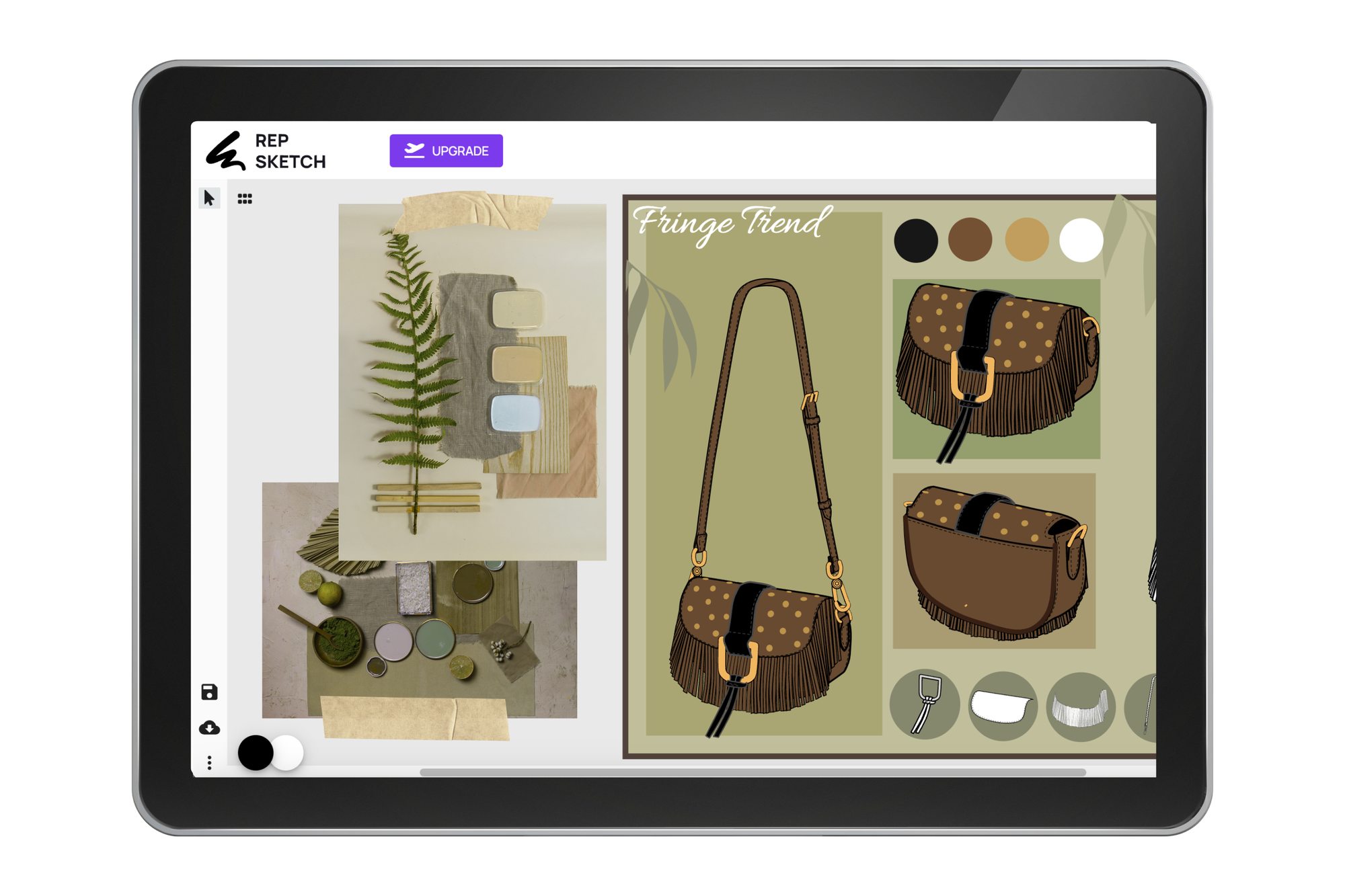
Adobe Express
The Adobe Express mood board maker offers a variety of customization possibilities. You can begin with a template and then personalize it to match your preferences. Adjustments such as resizing text, repositioning elements on the page, applying special effects filters, adjusting transparency, and modifying border configurations are all available options.
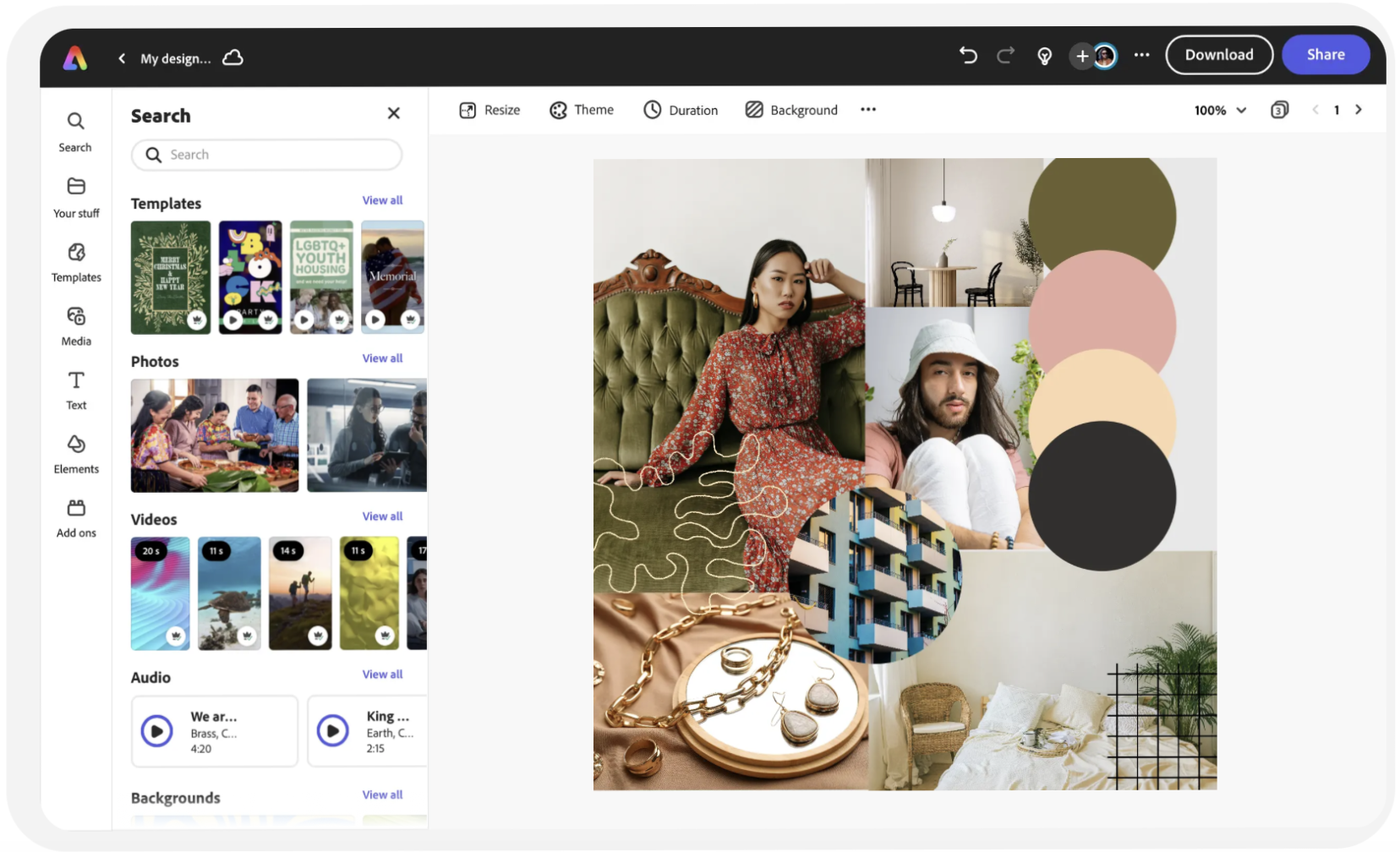
Fotor
Fotor is an online photo editing platform featuring its own mood board generator. With an extensive array of mood board templates, backgrounds, color schemes, fonts, and graphics at your disposal, it offers ample creative possibilities.
Additionally, Fotor provides access to high-resolution, copyright-free images to enhance your mood boards. Moreover, you can conveniently utilize the Fotor mood board creator on your mobile device and seamlessly share your creations across various social media platforms.
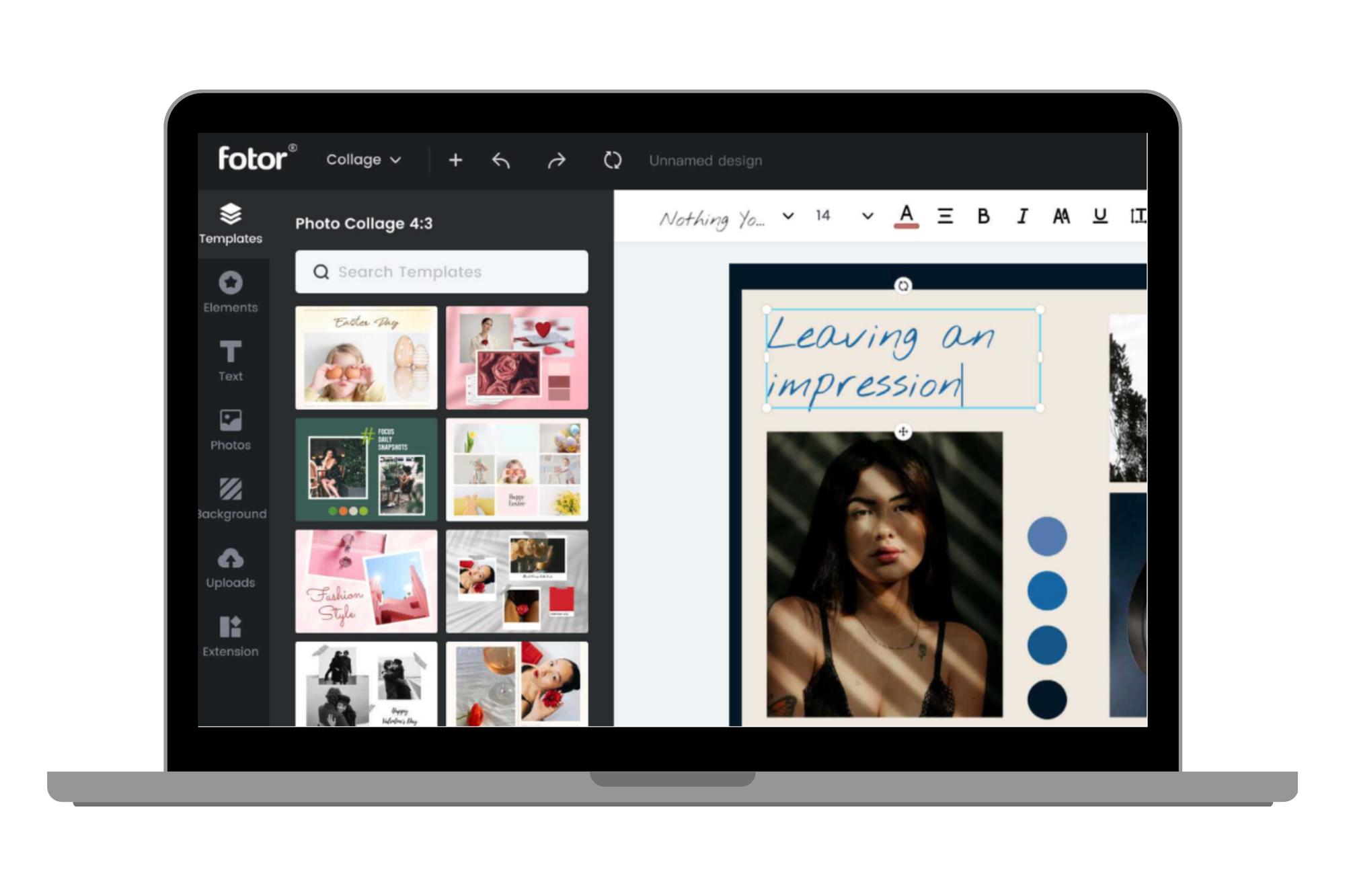
Canva
Canva provides an easy-to-use online mood board creator. Utilize its drag-and-drop design tools to swiftly create a mood board. Choose from a variety of professionally crafted templates and customize them to suit your project. Explore Canva's extensive media library for images, illustrations, and design elements. Rearrange and adjust elements as needed, then effortlessly share your mood board with others.
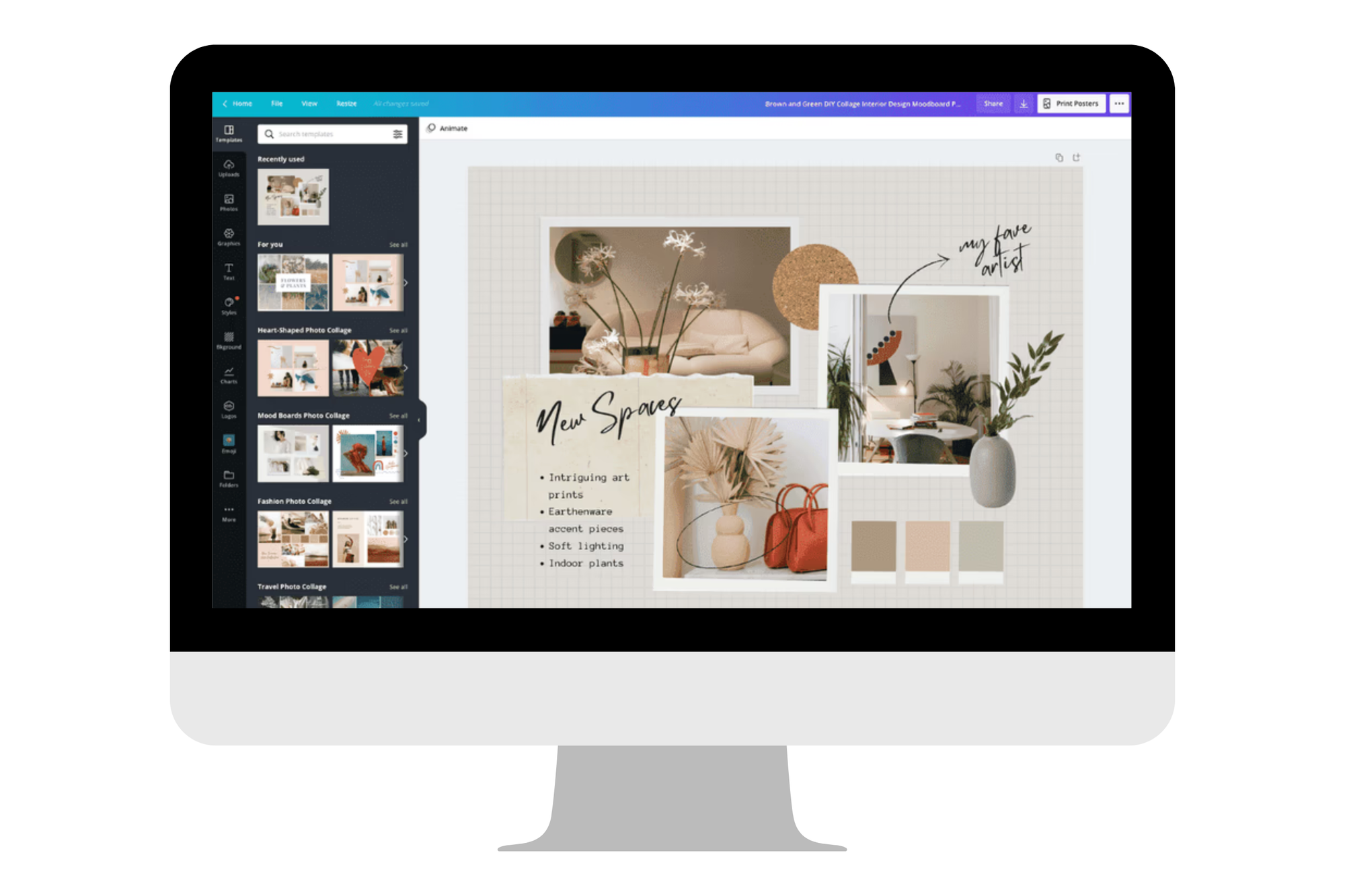
Milanote
Milanote offers a seamless way to craft stunning and shareable mood boards in mere minutes. Ideal for gathering inspiration and structuring your vision, Milanote empowers you to create and distribute beautiful mood boards effortlessly. Utilize its intuitive search function to find images relevant to your project, or simply drag and drop your own.
With over 100 free, user-friendly templates at your disposal, customization is a breeze. Plus, you can save your preferred layouts as custom templates for future use. Collaborate effectively by leaving comments and feedback directly on your boards. Milanote is the ultimate tool for bringing your ideas to life visually.
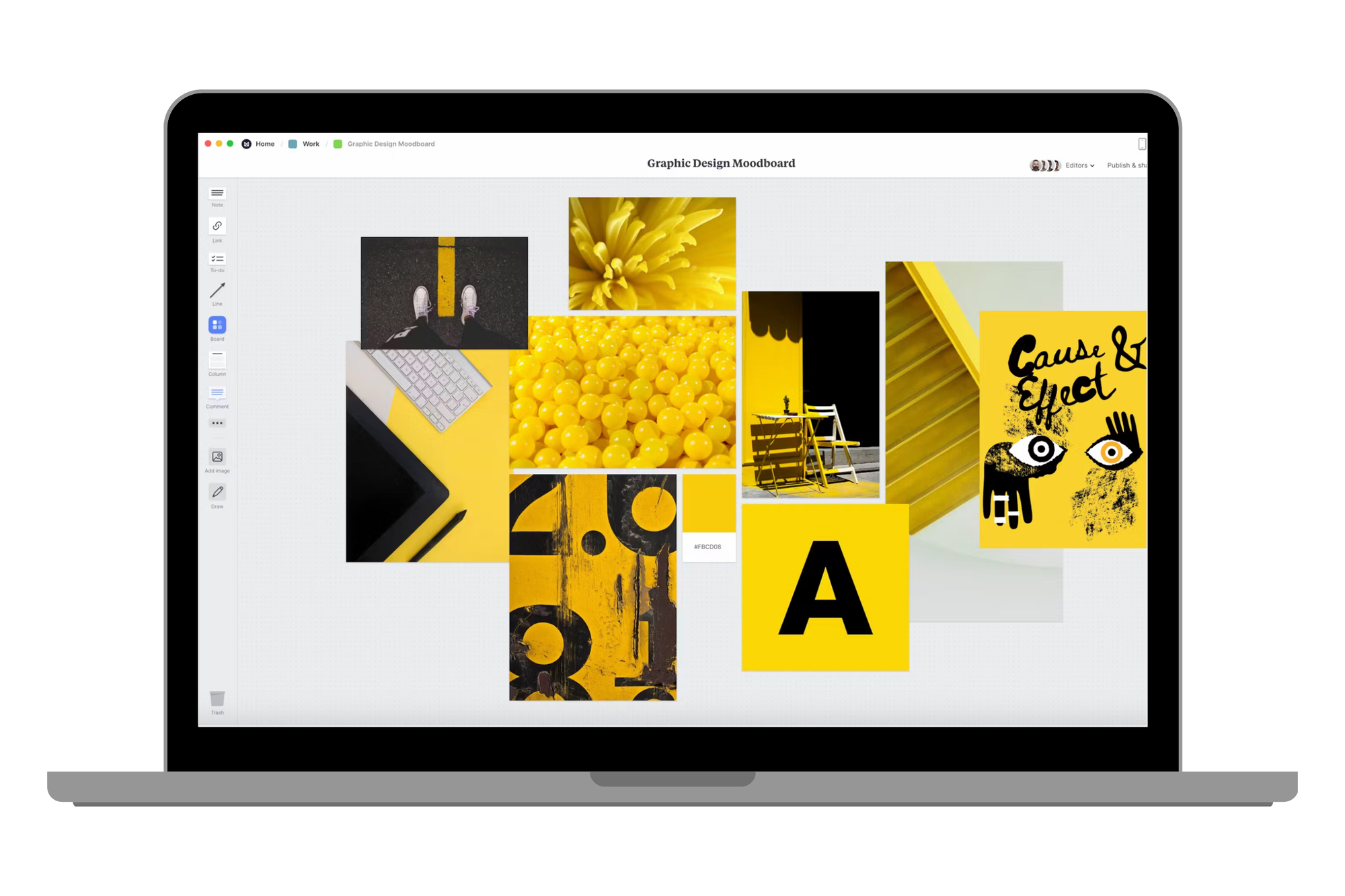
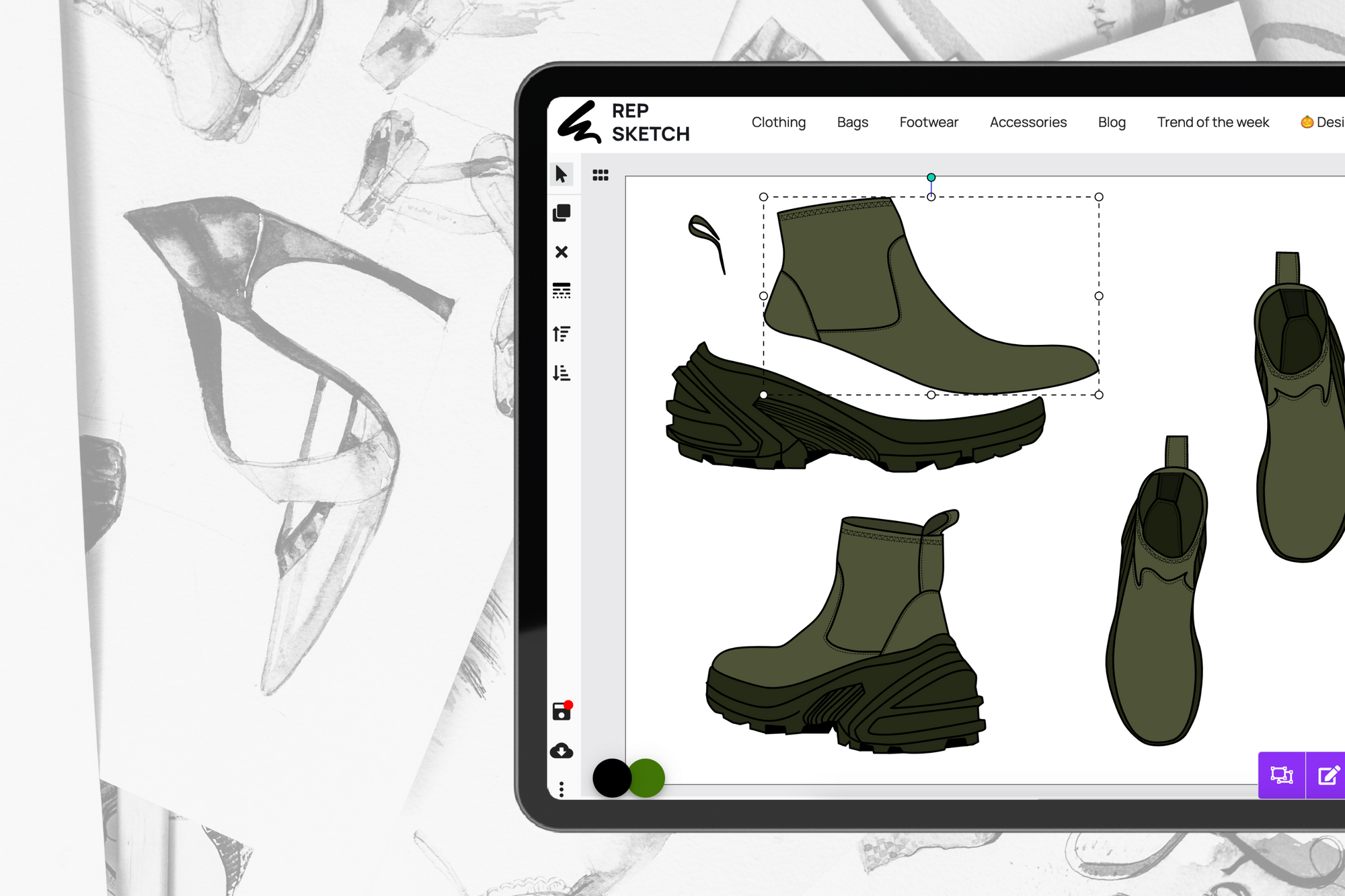
RELATED ARTICLE

